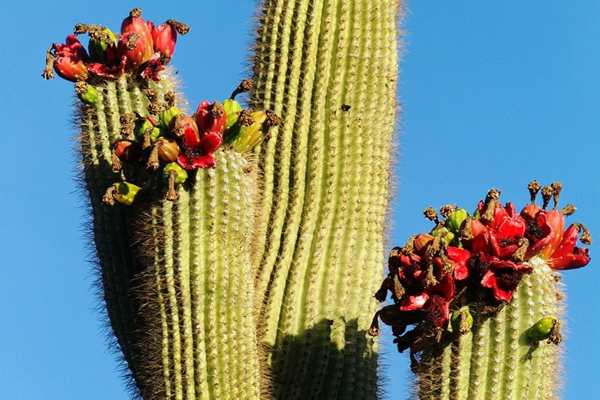One of the largest cactus species on earth, the Saguaro cactus (Cereus giganteus), is most known for growing in the Sonora desert of America. Despite the fact that its physical area is not very large, it is densely populated and has a wide range of plants. Between Tucson and Phoenix, in the Sonoran Desert’s Arizona Upland region, it is regularly seen.
Given that it requires a lot of water, the region’s rainy climate is ideal for its huge growth. The most noticeable plant in this area is the saguaro cactus because of its unusual shape and enormous size, but due to the moderate rainfall, this area is also the hub of many dense plantations. Other desert trees and bushes surround the majority of the Saguaro cactus trees.
The Saguaro cactus may grow up to 12 meters tall and is thought to be more than 200 years old. Young Saguaro cacti develop very slowly, and the ‘nurse plants’ shield them from predators and harmful solar rays. In actuality, their shadows serve as shelter and create an environment that is damp and moisture-absorbing for their growth.
A protective covering of succulents and an intrusive, hairy skin that holds water make up the Saguaro cactus’ trunk surface. On the branches of the stem that emerge from each and every areole, there are likewise enormous thrones. Bell-shaped flowers emerge during the flowering season, growing to about 10 centimeters in width. After being visited by birds and bees, they produce the delicious fruit, which has a rich pulp and numerous black seeds. The primary source of these seeds’ dissemination among the supporting plants is birds. The perfume and abundant nectar of Saguaro cactus blossoms attract bees, who play a significant role in dispersing the seeds.
There are numerous birds and animals that call the saguaro cactus home. Gila woodpeckers and golden flickers are particularly known for nesting in the stems of saguaro cacti. Additionally, hawks build their sizable nests on saguaro cactus branches. The Saguaro cactus is commercially farmed in many nurseries by creating an artificial cactus environment. It grows best in damp conditions. The Saguaro cactus is frequently in danger from climate factors like wind, lightning-caused fire, freezing in the winter, and storms.

